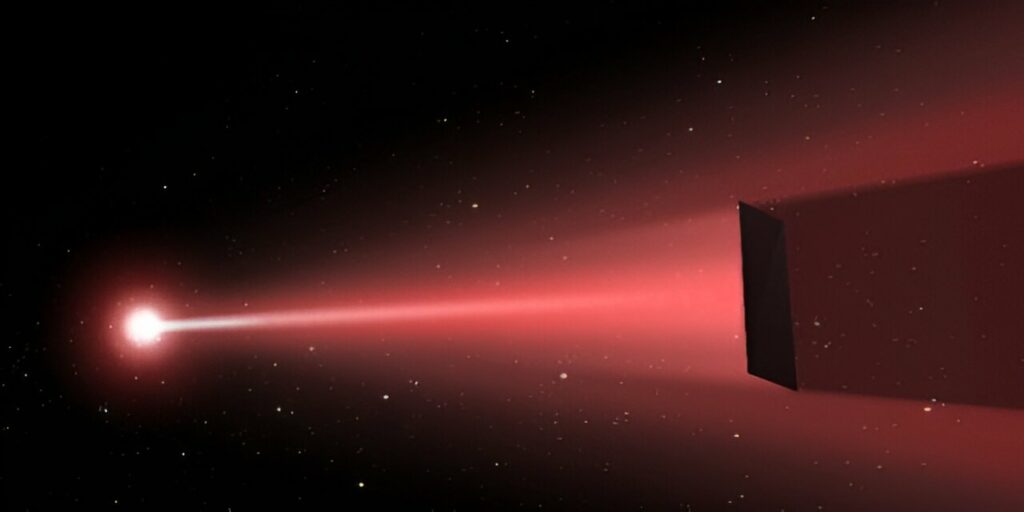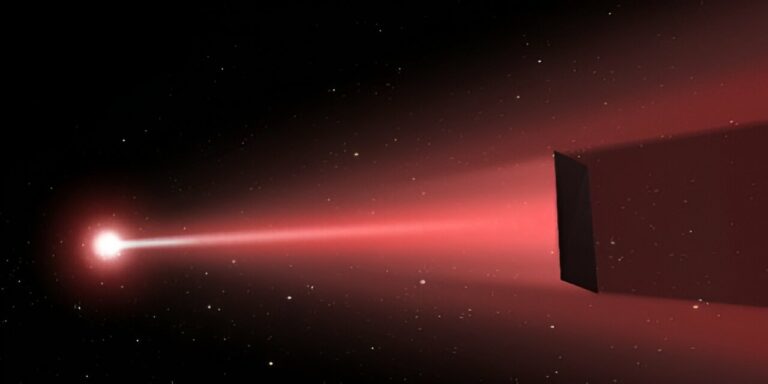Earthbound Lasers Propose Potential for Propelling Spacecraft to Distant Stars
The future of space exploration entails ambitious plans to venture farther from Earth than ever before. In addition to the current proposals for establishing infrastructure in cis-lunar space and conducting crewed missions to the moon and Mars, there are also plans to dispatch robotic missions to the outer reaches of the solar system, to the gravitational lens of our sun, and even to the nearest stars in order to explore exoplanets. Achieving these objectives necessitates the development of next-generation propulsion systems capable of providing high thrust and consistent acceleration.
One avenue of investigation involves focused arrays of lasers, known as directed energy (DE), and lightsails. Initiatives like Breakthrough Starshot and Swarming Proxima Centauri are extensively exploring these possibilities. Furthermore, a team from McGill University in Montreal has proposed a novel type of directed energy propulsion system for solar system exploration. In a recent publication, the team shared the preliminary findings of their Laser-Thermal Propulsion (LTP) thruster facility, which indicate that this technology holds promise in terms of delivering both high thrust and specific impulse for interstellar missions.
The research team, led by Gabriel R. Dube, an Undergraduate Research Trainee with the McGill Interstellar Flight Experimental Research Group (IFERG), and Associate Professor Andrew Higgins, the Principal Investigator of the IFERG, collaborated with Emmanuel Duplay, a graduate researcher from the Technische Universiteit Delft (TU Delft); Siera Riel, a Summer Research Assistant with the IFERG; and Jason Loiseau, an Associate Professor with the Royal Military College Of Canada.
Their findings were presented at the 2024 AIAA Science and Technology Forum and Exposition, and a paper detailing their research was published in the AIAA SCITECH 2024 Forum.

Higgins and his colleagues first introduced this concept in a 2022 paper published in Acta Astronautica titled “Design of a rapid transit to Mars mission using laser-thermal propulsion.” According to a report by Universe Today, the inspiration for the Laser-Thermal Propulsion (LTP) came from interstellar concepts such as Starshot and Project Dragonfly. However, Higgins and his team from McGill University were specifically interested in applying this technology to enable fast transit missions to Mars within a mere 45 days, as well as throughout the entire solar system. They believed that this approach could not only validate the involved technologies but also serve as a crucial stepping stone towards interstellar missions.
Higgins explained to Universe Today via email that the idea for LTP emerged during the pandemic when they were unable to access their laboratory. He mentioned that his students conducted a comprehensive conceptual study on utilizing large laser arrays, similar to those envisioned for Breakthrough Starshot, for near-term missions within the solar system. Instead of using a 10-km-diameter, 100-GW laser like Breakthrough Starshot, they opted for a 10-m-diameter, 100-MW laser. Their study demonstrated that this laser configuration could effectively deliver power to a spacecraft up to the distance of the moon by heating hydrogen propellant to extremely high temperatures of tens of thousands of Kelvin. This laser-induced heating enables the achievement of both high thrust and high specific impulse, which are considered the “holy grail” in propulsion.
The concept bears similarities to nuclear-thermal propulsion (NTP), a technology currently being developed by NASA and DARPA for rapid transit missions to Mars. In an NTP system, a nuclear reactor generates heat, causing hydrogen or deuterium propellant to expand. This expanded propellant is then directed through nozzles to generate thrust.
In the case of LTP, phased-array lasers are focused into a hydrogen heating chamber, and the heated hydrogen is subsequently expelled through a nozzle, resulting in specific impulses of 3,000 seconds. Since Higgins and his students regained access to their laboratory, they have been diligently working towards experimentally verifying their concept.
It is evident that McGill does not possess a 100 MW laser, but they have successfully established a 3-kilowatt laser setup in their laboratory. This development is quite intimidating in itself. Their current focus is on studying how the laser can effectively transfer its energy to a propellant. Initially, they are using argon as the propellant due to its ease of ionization, although they plan to transition to hydrogen eventually. The AIAA paper provides a comprehensive account of the design, construction, and testing process of their 3-kW laser facility.
During their experiments, Higgins and his team built a device that contained 5 to 20 bars of static argon gas. While their ultimate goal is to utilize hydrogen gas as the propellant, they opted for argon gas during the testing phase due to its ionization simplicity. They conducted pulses of the 3-kW laser at a frequency of 1,070 nanometers, which corresponds to the near-infrared wavelength. This allowed them to determine the minimum power required for Laser-Sustained Plasma (LSP). The results indicated that approximately 80% of the laser’s energy was successfully transferred to the plasma, aligning with previous research findings.
Furthermore, the team collected pressure and spectral data, which provided insights into the peak LSP temperature with the working gas. However, they emphasize the need for further research to draw conclusive results. They also highlight the necessity of a dedicated apparatus for conducting forced flow and other LSP tests. In addition, the team has plans to carry out thrust measurements later this year. These measurements will help determine the amount of acceleration (delta-v) and specific impulse (Isp) that a laser-thermal propulsion system can deliver for future missions to Mars and other celestial bodies within our solar system.
If this technology proves to be successful, it could revolutionize space travel by enabling astronauts to reach Mars in a matter of weeks instead of months. Other concepts chosen for the NIAC this year involve evaluating hibernation systems for extended missions in microgravity. These technologies, either individually or in combination, have the potential to facilitate fast-transit missions that require less cargo and supplies, while also minimizing the adverse effects of microgravity and radiation on astronauts.
This article is republished from PhysORG under a Creative Commons license. Read the original article.
Do not forget to share your opinion with us to provide you with the best posts !




0 Comments